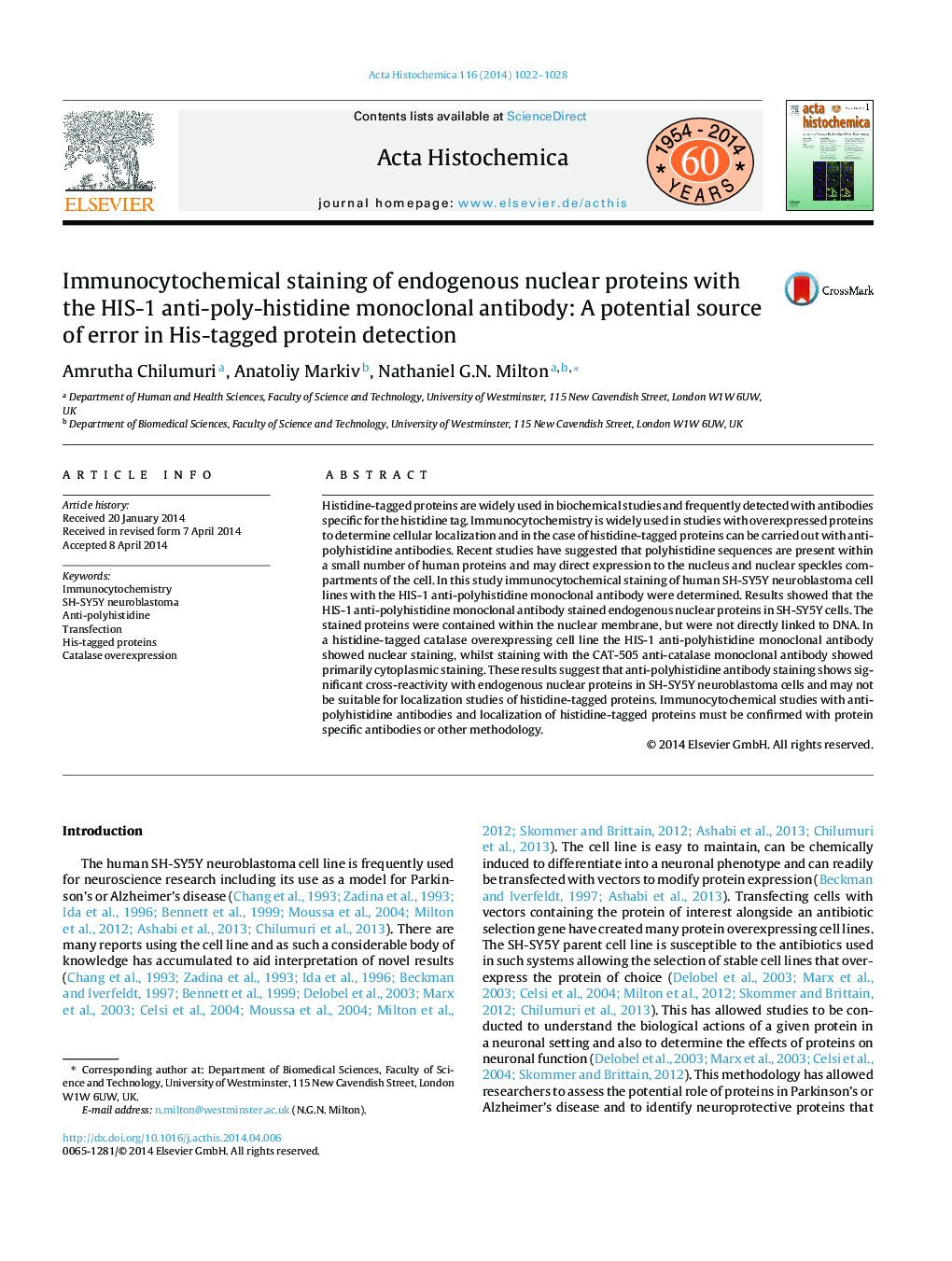| Article ID | Journal | Published Year | Pages | File Type |
|---|---|---|---|---|
| 1923531 | Acta Histochemica | 2014 | 7 Pages |
Histidine-tagged proteins are widely used in biochemical studies and frequently detected with antibodies specific for the histidine tag. Immunocytochemistry is widely used in studies with overexpressed proteins to determine cellular localization and in the case of histidine-tagged proteins can be carried out with anti-polyhistidine antibodies. Recent studies have suggested that polyhistidine sequences are present within a small number of human proteins and may direct expression to the nucleus and nuclear speckles compartments of the cell. In this study immunocytochemical staining of human SH-SY5Y neuroblastoma cell lines with the HIS-1 anti-polyhistidine monoclonal antibody were determined. Results showed that the HIS-1 anti-polyhistidine monoclonal antibody stained endogenous nuclear proteins in SH-SY5Y cells. The stained proteins were contained within the nuclear membrane, but were not directly linked to DNA. In a histidine-tagged catalase overexpressing cell line the HIS-1 anti-polyhistidine monoclonal antibody showed nuclear staining, whilst staining with the CAT-505 anti-catalase monoclonal antibody showed primarily cytoplasmic staining. These results suggest that anti-polyhistidine antibody staining shows significant cross-reactivity with endogenous nuclear proteins in SH-SY5Y neuroblastoma cells and may not be suitable for localization studies of histidine-tagged proteins. Immunocytochemical studies with anti-polyhistidine antibodies and localization of histidine-tagged proteins must be confirmed with protein specific antibodies or other methodology.
